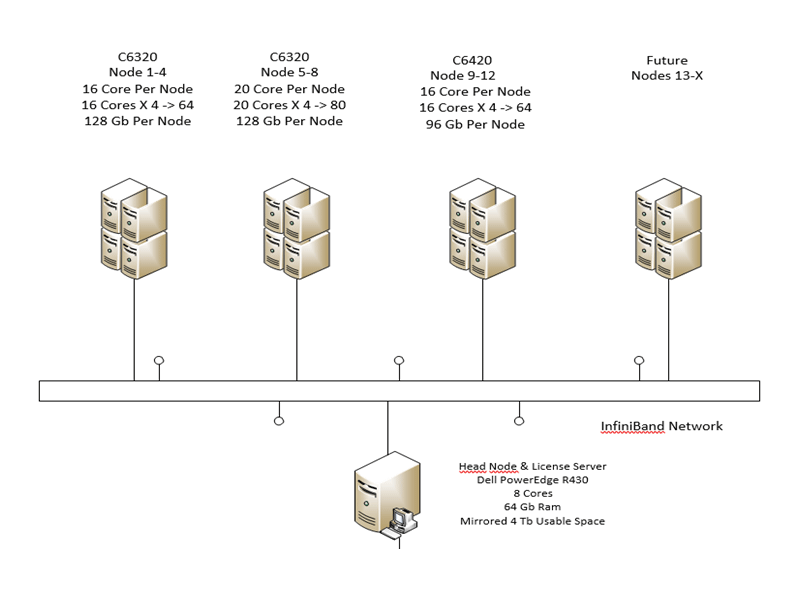High-Performance Computer Cluster Overview

Topology
The CoE-HPC cluster currently has:
- Head node with 12 cores
- 8 servers with 16 cores each
- 4 servers with 20 cores each.
- 208 total computational cores in the cluster
- Total RAM of 8x128GB or 1024GB (not including the head node)
Allocations
Each user receives a default allocation with the following directories:
- $HOME directory: the home directory can be used to host critical files like software applications. It is backed up to a remote location. HOME directories are private to each user.
- data: the ‘“data” file system is backed up to a remote location.
- work: a group directory where members of a research group can easily share files. Not backed up.
- scratch: a local directory for each user. All data on this directory is private to the user. Not backed up.
Job Submission
The CoE-HPC uses SLURM (Simple Linux Universal Resource Manager) to manage resource scheduling and job submission. SLURM uses “partitions” to divide types of jobs.
Partition |
Time limit (hours) |
Number of nodes |
Default/Max |
Max memory per node (GB) |
Debug |
2:00:00 |
001-004 |
1/16 |
128 |
defq* |
unlimited |
001-004 |
1/16 |
128 |
Shared |
unlimited |
005-008 |
1/20 |
128 |
Fast |
unlimited |
009-012 |
1/16 |
96 |
Software
- LAMMPS
- Quantum Espresso
- VASP
- MATLAB
- Akantu
- Variety of in-house codes
- ANSYS (available soon)
- Abaqus (available soon)TensorFlow (available soon)
Acknowledgement in Publications
All users of the computational resources of the CoE-HPC cluster for their research will provide an acknowledgement statement in their publications. Any of the following three options, or variations therein, are allowed:
- Option 1: “This work used the High-Performance Computing cluster of the College of Engineering at Villanova University.”
- Option 2: “Computer time allocations at Villanova’s HPC-CoE cluster are acknowledged.”
- Option 3: “All simulations were run on the High-Performance Computing cluster of the College of Engineering at Villanova University.”
